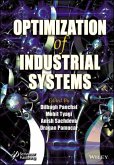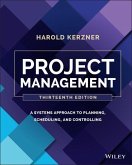Developed from the authors' longstanding course on decision and risk analysis, Value-Added Decision Making for Managers explores the important interaction between decisions and management action and clarifies the barriers to rational decision making. The authors analyze strengths and weaknesses of the best alternatives, enabling decision makers to improve on these alternatives by adding value and reducing risk.
The core of the text addresses decisions that involve selecting the best alternative from diverse choices. The decisions include buying a car, picking a supplier or home contractor, selecting a technology, picking a location for a manufacturing plant or sports stadium, hiring an employee or selecting among job offers, deciding on the size of a sales force, making a late design change, and sourcing to emerging markets. The book also covers more complex decisions arising in negotiations, strategy, and ethics that involve multiple dimensions simultaneously.
Numerous activities interspersed throughout the text highlight real-world situations, helping readers see how the concepts presented can be used in their own work environment or personal life. Each chapter also includes discussion questions and references.
Web Resource
The book's website at http://ise.wayne.edu/research/decision.php offers tutorials of Logical Decisions software for multi-objective decisions and Precision Tree software for probabilistic decisions. Directions for downloading student versions of the DecisionTools Suite and Logical Decisions software can be found in the appendices. Password-protected PowerPoint presentations for each chapter and solutions to all of the numeric examples are available for instructors.
The core of the text addresses decisions that involve selecting the best alternative from diverse choices. The decisions include buying a car, picking a supplier or home contractor, selecting a technology, picking a location for a manufacturing plant or sports stadium, hiring an employee or selecting among job offers, deciding on the size of a sales force, making a late design change, and sourcing to emerging markets. The book also covers more complex decisions arising in negotiations, strategy, and ethics that involve multiple dimensions simultaneously.
Numerous activities interspersed throughout the text highlight real-world situations, helping readers see how the concepts presented can be used in their own work environment or personal life. Each chapter also includes discussion questions and references.
Web Resource
The book's website at http://ise.wayne.edu/research/decision.php offers tutorials of Logical Decisions software for multi-objective decisions and Precision Tree software for probabilistic decisions. Directions for downloading student versions of the DecisionTools Suite and Logical Decisions software can be found in the appendices. Password-protected PowerPoint presentations for each chapter and solutions to all of the numeric examples are available for instructors.
"[The authors] introduce all concepts and methods using realistic decision-making examples to make them relevant to practitioners. This style also makes the description of the processes easy to comprehend and apply. ... I was impressed with the presentation and development of the materials. Because it avoids purely technical topics, this book is easy to read and would make an excellent textbook for a practical course on decision making with multiple objectives and under uncertainty."
-Matthias Ehrgott, The University of Auckland, Interfaces, July-August 2013
-Matthias Ehrgott, The University of Auckland, Interfaces, July-August 2013








